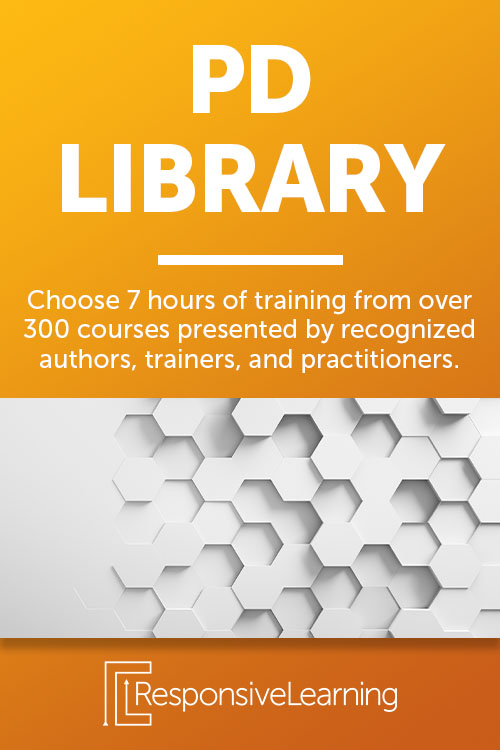
Children thrive on thoughtful structure and routine, and students in special education classrooms are no exception. Without it, these students often have a difficult time transitioning between tasks and remembering the sequence of events for the day.
When there’s a lack of clear expectations, students can become anxious and have trouble focusing on their work. Verbal and written reminders alone may not be enough to support these students. When students don’t feel in control of their time, it can cause disruptions in the classroom, and educators can find themselves repeating the same instructions over and over again.
In our newest course, “Special Education Basics – First-Then Visuals,” teachers will discover how to use the power of visuals to create structure for special education students.
This course was created by Ayo Jones, an expert special education teacher, coach, and speaker. Ms. Jones has taught in special education classrooms for over 15 years and consults with school districts across Texas. Her practices are used in classrooms throughout the world.
Using visuals as the key
We use visuals every day to help us process our lives. Visuals on our morning cup of coffee remind us that the contents may be hot. Visuals on road signs let us know that lanes are merging ahead, and visuals on an airplane tell us when it’s safe to get up from our seats.
Educators can tap into the benefits of visuals in their special education classrooms to aid their students. According to Ms. Jones, First-Then visuals are essential visuals that allow students to process their schedule, demands, and rewards that are coming in a very small amount of time.
First-Then visuals are simple and more focused than a written schedule, and one of the things that makes them so effective is that they can be used by all students, no matter what their reading abilities are.
Become a First-Then visual expert

In this course, your instructor, Ayo Jones, will walk you through the research-based process of creating First-Then visuals that will support your teaching and help you with classroom management. Using these visuals will allow your students to transition between tasks easier, manage their anxiety, and communicate what’s going to happen next.
This research-based tool has been used successfully in classrooms around the country, and in this 30-minute course, participants will discover:
- What a First-Then visual is
- Who a First-Then visual is best used for
- When a First-Then visual is best implemented
- Why use a First-Then visual in your classroom
- The best practices and strategies for creating a First-Then visual
This course is filled to the brim with practical steps for creating effective visuals for a multitude of educational situations. Educators will walk away with actionable tips that they can start using today, such as:
- Using a basket to collect all of the finished visuals. At the end of the day, your student will be able to tangibly see what they’ve accomplished.
- Getting your students involved with creating their own rewards to promote collaboration and independence.
- Putting the most difficult tasks of the day at the beginning of your First-Then visuals so that students are more motivated to get to the tasks they enjoy more.
Bring peace to your special education classroom
Ready to get started? Check out the demo for this course and learn more about using First-Then visuals today. No matter what needs your students have, First-Then visuals can help support their learning.
Want to discover more? Learn more about this course and other courses in the PD Library bundle.







